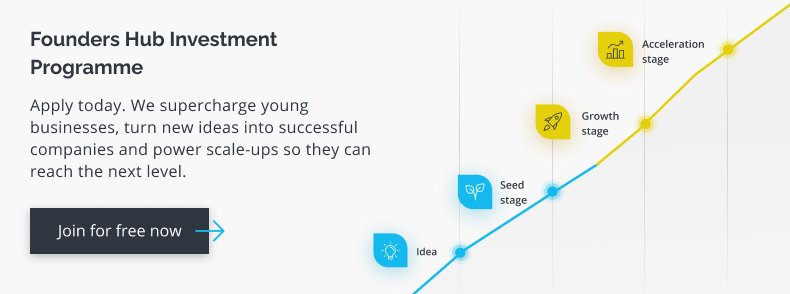The idea that we need to focus on finding and fixing people’s weaknesses is an outdated traditional workplace practice that stems from the industrial revolution. There’s certainly no place for it in the modern office. Here’s why.
Remember when Chris Martin of Coldplay had a bit of whinge in his song, Fix You?
“When you try your best, but you don’t succeed.”
What he failed to ask the whole time was why. Why wasn’t that person succeeding?
During the start-up phase we know you’re going to be really conscious of business expenditure, and we know that one of the biggest running costs is, of course, building an exceptional team.
Staff costs are expensive, and a popular approach many start-ups take is to hire excellent multi-taskers. The types who quickly end up with job titles that go something like…
- VP of Product, Sales & Development, HR, & Distribution, or
- Director of Communications, Customer Relations-cum-PA to the CEO.
These roles are regularly grasped by bright, young go-getters straight out of university who don’t know their value and are enthusiastic to take on a plethora of varied responsibilities – even if they don’t always have the specific skill set required.
But wait.
Is there a cost to having roles that are not specific, or that don’t look at the individual’s core strengths? In our years of experience, we believe there really is.
Business is not like being at school. As a CEO you shouldn’t be trying to get an ‘A’ in every subject – and neither should your team.
Harness natural talent
The truth is a school or university report card should look nothing like a business performance review. Nor should your team feel like coming to work is a non-stop gym workout where they have to keep pushing and pushing to succeed. If you see a team member trying really hard but not showing any results then usually it’s the CEO who needs to switch their approach – not the team member!
There are always going to be certain tasks that might seem obvious within a particular department. But there does need to be cross-over – both in start-up businesses where each department is literally one or two people, and in fully-established companies.
For example, if a member of the finance team is struggling to communicate to a client about a late payment, get someone from the marketing and comms team to help them – it’ll be easy for them to create a template and add just the right touch of word wizardry.
If a marketing head isn’t too strong on advanced spreadsheet skills, identify the person in your company who could tell you shortcuts in their sleep and ask them to help. You could even give them an internal title, like Chief Excel Officer!
This is more than just a strategic move to optimise efficiency though, it’s also personal.
Strengths-based development pays back
When people are asked to do something they don’t think they’re very good at, or worst still, are expected to do something as part of their role that they really struggle with, it knocks their confidence.
That team member can waste valuable time trying to learn skills that perhaps just don’t come naturally to them, or spend much longer actually trying to ace that task, compared with someone who has competency and can nail it in a quarter of the time. The result? A deflated employee.
However, if that same employee only needs to use the talents they already have and skills they already know, they’ll be cooking with gas!
Working smart should, for the most part, feel effortless and easy!
A study by Gallup and the VIA Institute on Character shows that switching from a find-and-fix approach to adopting a strengths-based development strategy within your workforce has the following positive results:
- 7% to 23% higher employee engagement
- 8% to 18% increase in performance
- 20% to 73% lower attrition
Yes, that means a strengths-focused workplace actually helps build a team who are happier, more engaged, and feel more confident!
Plus, it gives their performance a positive energy boost! The same Gallup study shows profits can increase by a whopping 30%. Win-win!
Strengths and weaknesses go hand in hand
In order to ensure your staff are working to their strengths, it’s on you as the leader to help them identify what these are, so that you can bring them out and nurture them within roles that best suit their abilities as the business grows. These same employees will then be able to grow as your business grows, so that you can establish a loyal, engaged team.
Strengths and weaknesses are so crucially interrelated that sometimes the easiest way to identify an employee’s strength is to observe where they are currently falling short.
Steve Jobs summed it up perfectly:
“In most cases, strengths and weaknesses are two sides of the same coin. A strength in one situation is a weakness in another, yet often the person can’t switch gears. It’s a very subtle thing to talk about strengths and weaknesses because almost always they’re the same thing.”
While we realise we’re broadly generalising here, for most common types of people, there is an alternative trait:
- numbers vs. words people
- sociable vs. assertive people
- analytical vs. action people
Strength-based development in practice
To adopt a strength-based approach to your staff, you want to add it into your business’s core values, and perhaps even into your mission statement. You and your senior management team will also need to sit down with each employee and ensure that the company’s idea of an employee’s strengths matches up with what they think it is.
Ask your team members what makes them tick, what makes them get up in the morning, and what helps them feel brilliant!
Sometimes, some employees are really good at something but just don’t enjoy that part of their role, so you may need to have a conversation about how that fits with their role and company values. There may even be a certain amount of job redesigning at this stage, as you agree upon new roles and responsibilities. Aas strengths-based development is introduced, cross-collaboration across different functions often becomes an important part of everyone’s new role descriptions.
You’ll want to add strength-based goals into each ongoing project or performance review, ensuring that it is included in core activities and tasks, and acknowledged when reviewing results.
You could also consider how your employees can further themselves using their strengths, perhaps through further learning and development opportunities.
And finally, you’ll want your confident and happy staff to share their knowledge with new team members who are coming up in the business, so that a positive learning environment is developed.
Character traits vs. Natural talents
Regardless of role, there are certain strong character traits that your start-up business should always look for when hiring. Resilience and patience is right up there, as is being a good problem-solver and decision maker in their particular field. Ensuring you have a team that is able to successfully get along well with one another and are company players is crucial, so that you can have successful skills sharing.
Being disciplined, responsible, and self-motivated with effective communication and organisational skills doesn’t go amiss either. But traits should never be confused with skills and natural ability.
If you’d like to understand more about how to engage your team, read the classic business book Now, Discover Your Strengths (2001) by Donald O. Clifton and Marcus Buckingham.






